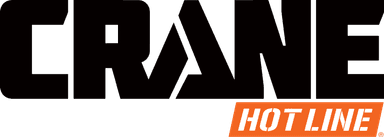Despite Industry Slowdown, Terex Sales Still Up
July 28, 2008 • Terex Corp., Westport Conn., announced in its second quarter 2008 segment performance review that lifting equipment sales remain steady.
The company's earnings per share has increased 39.8 percent in second quarter 2008 with its net income reaching $236.3 million, or $2.32 per share, compared to net income of $174.6 million, or $1.66 per share, for the second quarter of 2007. Additionally, net sales hit $2.9 billion in the second quarter of 2008, which were 25.3 percent above the same period in 2007. This was impacted by acquisitions and the translation effect of foreign currency exchange rate changes (3.4 and 7.9 percent, respectively). Excluding these effects, net sales increased 14.1% in the second quarter of 2008 versus the prior year period.
“The infrastructure and commodity boom is driving strong demand for our cranes and mining equipment,” said Ron DeFeo, chairman and chief executive officer. “Based on our increasing backlog for these products, we expect these positive trends to continue.” He adds that softening in the construction segment and a slowdown in aerial work platform sales partially offset company growth.
Cost increases continue to present challenges for Terex, and DeFeo said the company will be implementing price increases in order to offset these costs. “While in total we expect higher pricing will largely offset the cost increases that we have already incurred, as well as additional cost increases that we expect to incur during the second half of 2008, we do expect that there will be a lag between when higher costs are incurred and price increases to our customers take effect,” he said. “Accordingly, we anticipate some reduction in operating margin in our business during the remainder of 2008."
Commenting on future earnings potential, DeFeo said he expects Terex's performance for 2008 to be within its previously announced range for earnings per share of $6.85 to $7.15 and net sales of $10.5 to $10.9 billion.
AWP and Crane Segment Performances
Net sales for the aerial work platform segment increased 5.1 percent in the second quarter to $672.7 million. Without foreign currency exchange rate changes, net sales increased approximately 1 percent. Net sales in Western Europe did not achieve the company's growth expectations this quarter, while U.S. performance was as expected. AWP performance in developing markets, including the Middle East, Russia, Eastern Europe and Brazil, continued to expand due to ongoing construction and infrastructure spending, along with tightening safety standards for work at height. AWP production is being adjusted to reflect anticipated demand in the second half of 2008 in the U.S. and Western Europe.
The AWP operating margin in the second quarter declined to 18.6 percent from 23 percent in the second quarter of 2007, primarily due to sales mix, rising input costs, and increased costs associated with the expansion of the global sales and distribution infrastructure.
Net sales for the cranes segment for the second quarter of 2008 increased 48.7 percent, compared to the second quarter of 2007, to $809.8 million. Excluding the translation effect of foreign currency exchange rate changes, net sales increased approximately 34 percent.
Global infrastructure and energy demand continues to drive strong sales of cranes, particularly larger capacity lattice boom crawler cranes, tower cranes, and rough-terrain cranes. The North American market remains strong for large capacity cranes, but sales of smaller capacity cranes, including boom trucks and lower capacity truck cranes, remain soft.
Cranes operating margin increased to 15.6 percent during the second quarter of 2008, up from 10.4 percent in the prior year period. The increase was primarily driven by higher volume and favorable sales mix, combined with historical pricing actions working through the backlog. Cranes mix in the quarter was oriented towards higher margin larger capacity cranes. Supplier constraints in Europe for select components, such as hydraulics and gear boxes, have improved, as have welding and assembly capacity constraints.
Capacity changes are being implemented in the Terex's cranes facilities, which are expected to increase throughput while minimizing the addition of fixed costs. For example, production of rough-terrain cranes in the Waverly, Iowa facility has doubled in the past year as a result of efficiency gains with no increase in square footage. Future throughput improvements are expected in the Terex's German and Chinese crane manufacturing locations.


